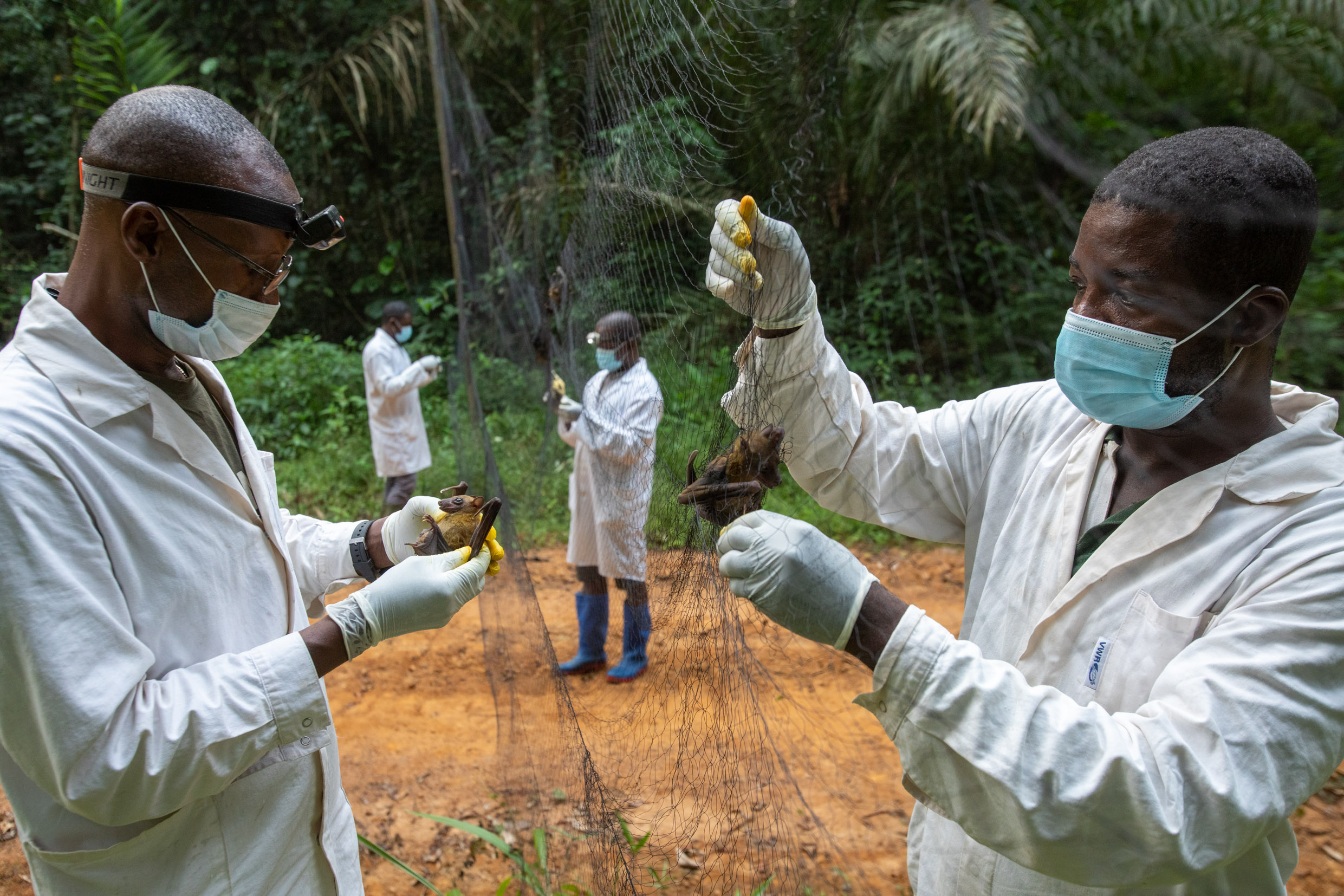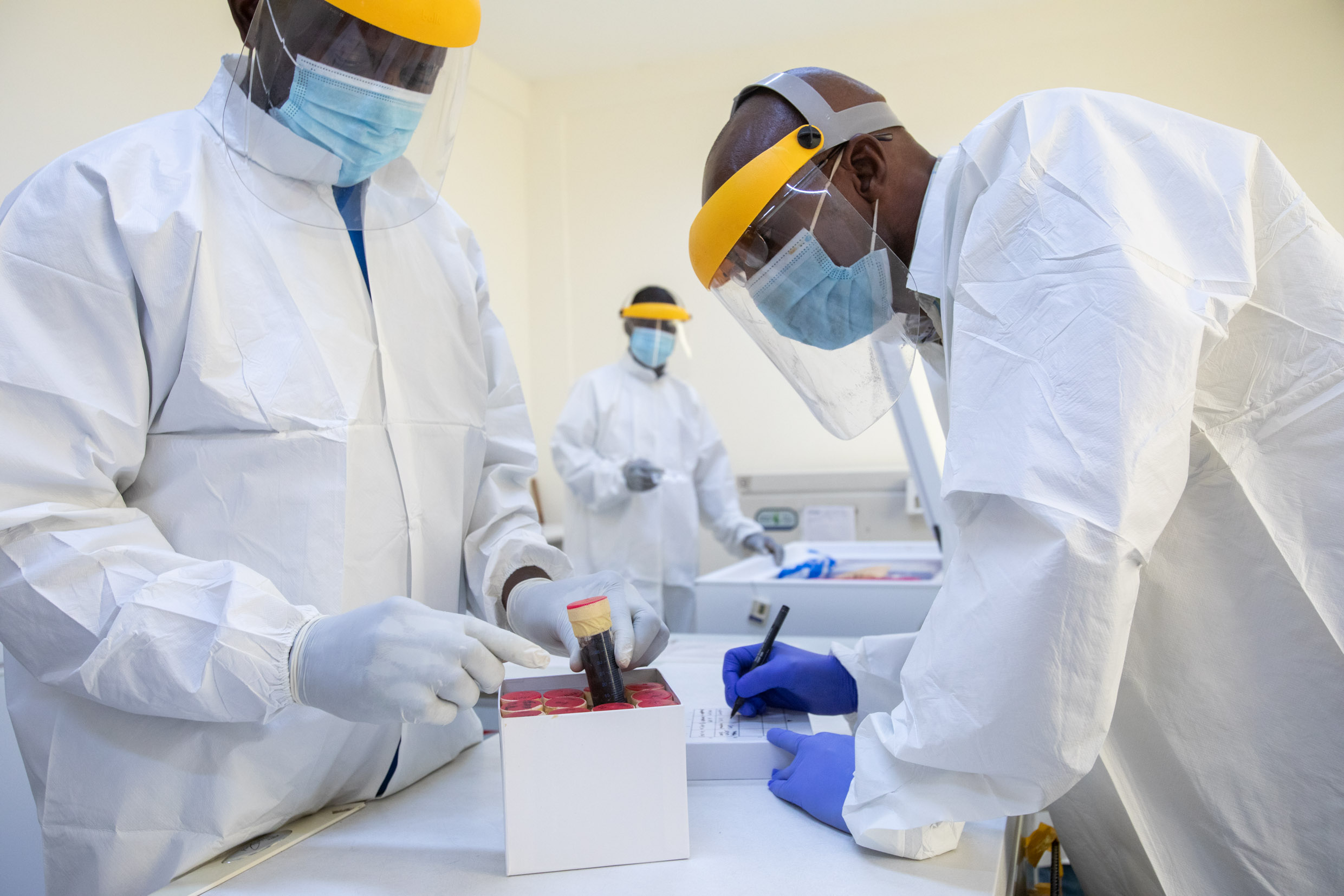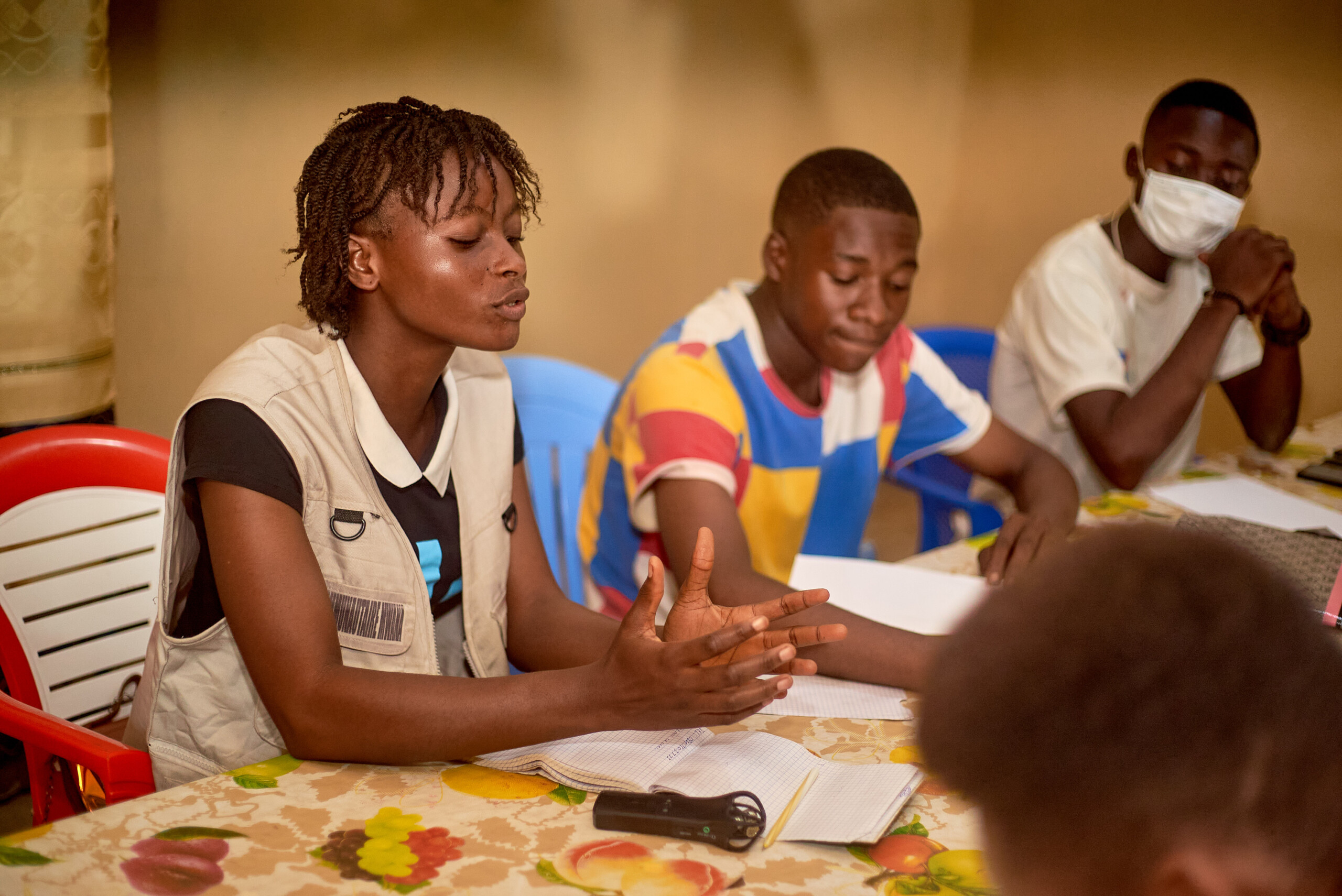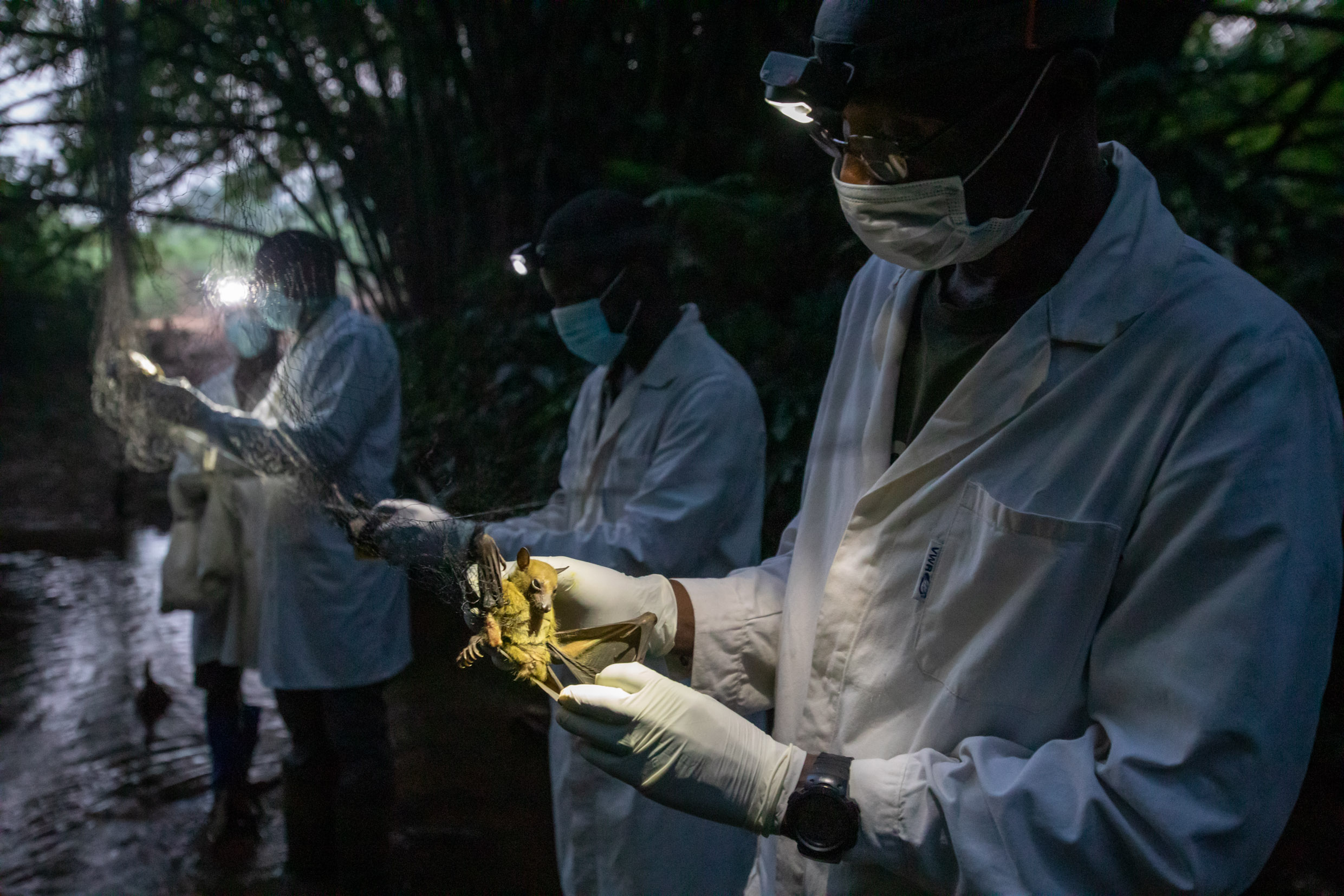©JFLagrot
WOAH and its partners work directly with nations to ensure their animal and human health systems align with a One Health approach. We help build their knowledge on how zoonotic diseases can spill over, how surveillance systems can operate more effectively, and what diagnostic laboratory techniques they need for their country to thrive.
We prepare countries for future outbreaks by teaching professionals the skills they need to sample wildlife, domesticated animals and humans for diseases that can spill over at the animal-human-environmental interface. Countries are thereby better able to report animal disease outbreaks to the World Animal Health Information System (WAHIS), which improves global surveillance as a whole.
Furthermore, laboratory twinning across participating countries is developing learning networks and closer collaboration in the region. Trainings, e-learnings, scholarships, and interactive learning models are adapted to students, veterinarians, doctors, ecologists and other professionals. Over 300 staff from national Veterinary Services have been trained on various surveillance competencies, such as sampling and disease notification.
WOAH is raising awareness on One Health and viral hameorrghic fevers with the communities that are impacted the hardest by spillovers of diseases like Ebola. Partnering with the Veterinary Services of each country, the EBO-SURSY Project developed communication tools for them to conduct direct outreach. By working with the at-risk communities, and wildlife and public health officials, health risks can be better managed and addressed.
Living within or near forested areas increases the likelihood of animal-human contact, increasing risk of disease spillover in both directions. WOAH works with local community radios in the Democratic Republic of the Congo and Guinea to share disease prevention messaging. By explaining the interconnection between the health of the community and that of animals and the environment, people are more informed on how to protect themselves. During the first phase of radio programming, we reached over 700,800 people, and improved local awareness of how average citizens can take part in surveillance systems in their communities.
Through conferences and publications, the results of the project’s scientific investigations on Ebola and other haemorrhagic fevers are disseminated to the international global health and scientific communities. We encourage collaboration between research institutes, and along with our partners, we have developed data maps showcasing thousands of wildlife, livestock and human samples for research.
©JFLagrot
Countries need structured approaches to combat disease threats. WOAH and its partners help provide predictive models and risk assessment tools based on a better understanding of virus transmission cycles, including potential wildlife reservoirs for VHFs and environmental factors, to increase virus detection and surveillance. In over 110 field investigations, the EBO-SURSY Project has sampled over 17,000 wildlife, livestock, and humans to improve VHF research.
Through epidemiological investigations, ecological and socio-economic studies, major health risks (real or perceived) associated with wildlife, bushmeat and human activities are being identified and assessed. WOAH engages countries to use this information to create or improve protocols of surveillance for viral haemorrhagic fever viruses, ensuring that wildlife surveillance is well integrated.
Banner photo: ©JFLagrot



